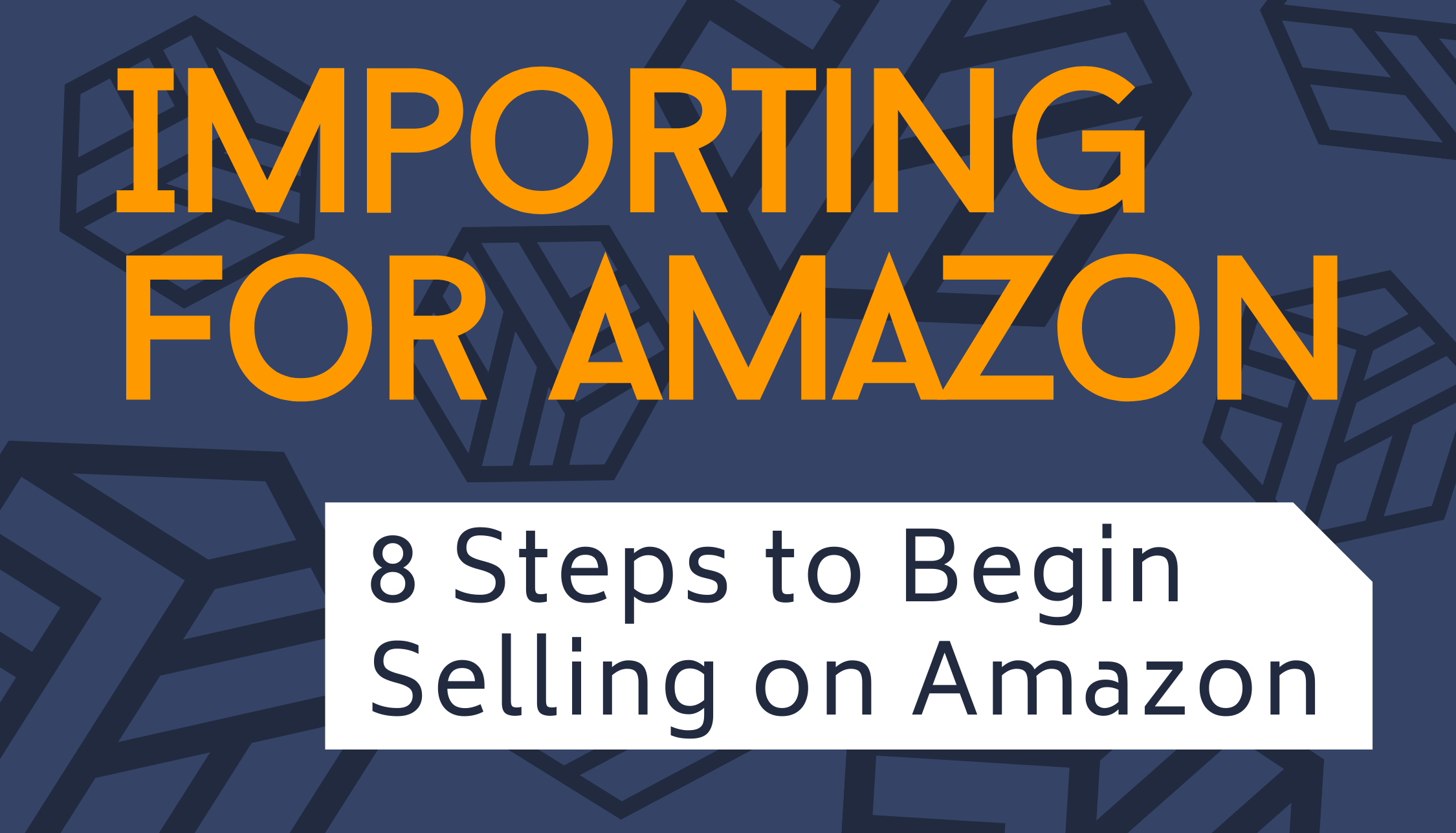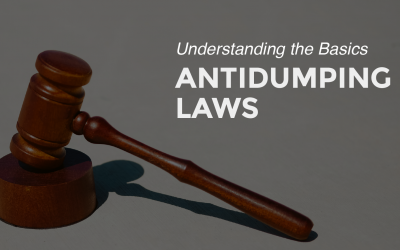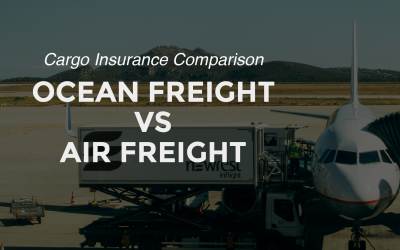Those who want to sell products manufactured outside the United States using Fulfillment by Amazon (FBA) will need to learn the basics of importing and the steps for becoming an Amazon seller.
FBA sellers can import their products, send them directly to an Amazon warehouse, and fulfill customer orders without having to see or touch the shipments. For this to happen without delay, there are specific steps that FBA sellers must follow.
Step 1: Choose Products
The first step of becoming an FBA seller is choosing what product to sell on Amazon. Sellers must choose their products carefully because they must meet Amazon’s product requirements. It is crucial to research shipping costs and Amazon seller fees to know how much sellers will need to spend, depending on their item.
Step 2: Find a Supplier
Once a seller decides what products they want to sell, they must then find a supplier. It is essential to check that the supplier is legitimate and has the necessary certifications. The seller must also check that the supplier’s products meet all requirements and do not violate any intellectual property rights.
Sellers should ask their suppliers for product samples to test them for quality control. Sellers need to test products from multiple suppliers to ensure they pick a quality product that fits their needs.
Step 3: Register and Create an Amazon Seller Account
Before sellers register, they should decide which plan is a better fit. There are two plans to choose from; Individual and Professional. Sellers should choose a plan based on the quantity of goods they are planning to sell. The Individual plan costs $0.99 per sale. Sellers using the Professional plan pay $39.99 per month, no matter how many items they sell. Therefore, the Professional plan is optimal for anyone planning to sell more than 40 items per month.
Once a seller registers, they have access to their Seller Central account. Seller Central is a place for sellers to manage their selling account, add product information, make inventory updates, download business reports, monitor performance, manage payments, and find content to navigate their business. It’s also where the seller lists their products.
Step 4: Ship Products to the United States
When the seller’s account is set up, they can then begin shipping their products from the supplier. FBA sellers should follow proper shipping practices to avoid delays and rejection from the Amazon fulfillment center. Those who do not want to take the time to manage their shipping can use a freight forwarder or brokerage service to take care of the nuances that come with international shipping.
Before the product is shipped, the seller or the seller’s broker must file an ISF with U.S. Customs. This includes information regarding the seller and the buyer, the importer number, the consignee number, the manufacturer, the ship-to party, the country of origin, and the Harmonized Tariff Schedule (HTS) classification number. Filing this information is mandatory for any shipment landing in a U.S. ocean port, and must be completed at least 24 hours before the vessel departs with the cargo.
Sellers must have a bond on file to import into the United States. Goods will not be cleared at their port of entry without one. Customs requires that a bond be posted with every ISF and Customs Entry to ensure that all duties, taxes, and fees owed to the federal government are paid.
Shipping from overseas comes with risk, so sellers should consider purchasing a Marine Cargo insurance policy. Marine cargo insurance covers the loss, damage, or theft of commodities while in transit between the point of origin and final destination. Contact TRG today to get a free Marine Cargo Insurance quote. Importers must pay for cargo insurance as part of the freight bill, but the protection it provides goes a long way if damage does occur, even if it is the carrier’s fault.
Step 5: Clear Products Through Customs
When the FBA products arrive at a United States port, there are many steps a seller must take if they are going to make entry themselves. However, if a seller does not want to take the time to do so, services are available so that sellers do not have to be very involved in the entry process. Those importing small amounts of goods can do without these services but will likely need to invest time in managing logistics, shipping documentation, and Customs forms.
U.S.Customs and Border Protection (CBP) guides the import community to increase compliance with domestic and international Customs laws. When importing in the United States, the following steps must be taken to ensure your shipment can arrive safely and legally without resulting in CBP storage fees or damages:
- Make arrangements at a CBP port of entry
- Declare the entry of goods
- File for cargo release
- File an entry summary
- Pay estimated Customs duties, taxes, and fees
- Ensure entry documentation is complete
An essential part of clearing products through Customs is that the seller or their broker ensures compliance with CBP regulations, otherwise known as informed compliance. Importers need to know the correct methods for classifying and assigning value to merchandise and ensuring familiarity with U.S. Customs laws and regulations. Informed compliance benefits both parties. When voluntary compliance is attained, compliant importers are less likely to have their shipments examined or their entries reviewed.
Step 6: Create Product Listings on Amazon
To sell a product on Amazon, sellers must create a product listing. Creating product listings in Seller Central allows Amazon to generate shipping information, including which Amazon fulfillment center products should be sent to.
Those using a Professional seller account can list their products in large batches while Individual sellers list products one at a time. Sellers can match an existing listing if someone else is selling the same product on Amazon or create a new listing if they are the first and only seller.
FBA products should have a Global Trade Item Number (GTIN), such as a UPC, an ISBN, or an EAN. These are also known as product I.D.s. Amazon uses product I.D.s to identify the exact item being sold. In addition to a product I.D., the following information goes into a product listing:
- SKU
- Product title
- Product description and bullet points
- Product images
- Search terms and relevant keywords
Step 7: Ship Inventory to an Amazon Fulfillment Center
Once the products have successfully entered into the United States, the seller or the seller’s broker must arrange for domestic truck or air shipping to an Amazon fulfillment center.
In order for sellers to ship goods directly to the Amazon fulfillment center without touching them, they must ensure that they have been appropriately packaged before they are delivered. Suppliers can sometimes do this packaging, but the other option is to send FBA products to a facility that prepares the proper packaging before sending them to the Amazon fulfillment center.
The specific fulfillment center that goods are sent to will be specified when the products & shipments are created in Amazon’s system. Once a seller’s inventory is stocked into the fulfillment center, the goods are ready to be sold. Inventory storage fees will be charged monthly and are based on the volume of inventory being held in an Amazon fulfillment center.
Step 8: Get Paid When Inventory Sells
FBA sellers do not handle FBA inventory. Amazon packages and ships FBA orders directly to the customer. Amazon also handles customer service, including questions, returns, and refunds. Amazon will collect payment from customers and pay the FBA seller their available funds every two weeks. A fee is charged, called a fulfillment fee, per unit sold that includes picking and packing orders, shipping and handling, customer service, and product returns.







![[Video] What Are Antidumping and Countervailing Duties?](https://traderiskguaranty.com/trgpeak/wp-content/uploads/2024/03/what-are-antidumping-countervailing-duties-YT-400x250.png)